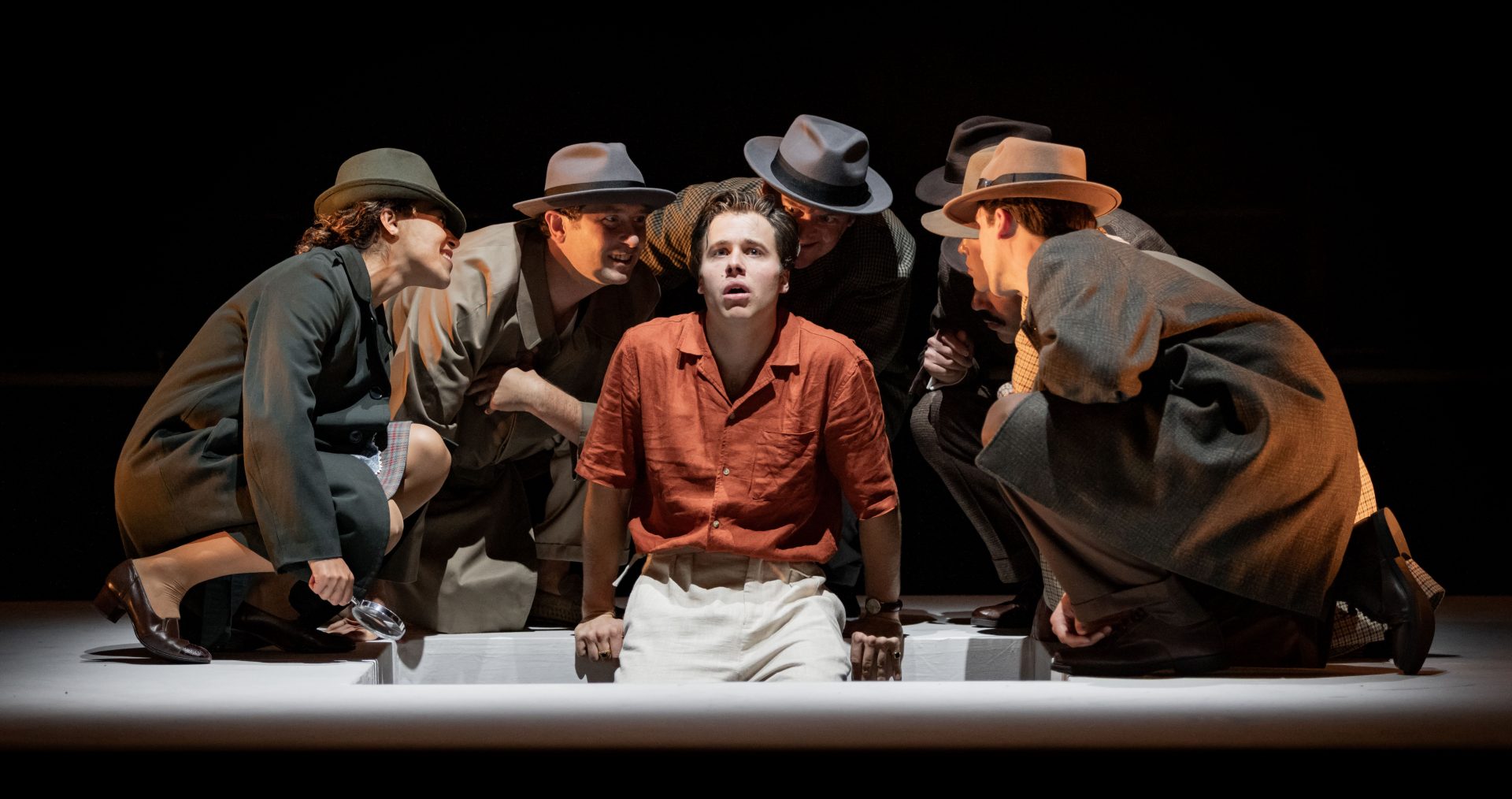Having conquered film and television, The Talented Mr. Ripley takes to the stage for a theatrical adaptation. Led by The Crown’s Ed McVey, this adaptation proves a masterclass that sees the actor earn his place alongside Damon, Scott, and Delon for incredible portrayals of Patricia Highsmith’s iconic character.
Drawing more from Highsmith’s novel than other iterations, this production generally follows the story’s key-beats. Bored and paranoid in New York, Tom Ripley is approached by a shipping magnate to travel to Italy and convince his son, Richard ‘Dickie’ Greenleaf, to return to the U.S.. Once there, Ripley worms his way into Dickie’s life before murdering him and taking it over for himself.
Initially, it feels like a loss to not see Rome, Venice, and the Amalfi Coast recreated on the stage. However, costume and set designer Holly Pigott strips these stunning Italian vistas away for a more condensed approach that better allows the character study to unfold. A white, raised stage stands on the main stage – a veritable island that serves as the world of Tom’s creation in which he lies and cheats his way through the story. The only addition is the occasional doorway or refrigerator rolled on to aid the actors.
Smartly, McVey rarely leaves this space, except in moments where he’s on the back-foot or risks being dragged back to reality. A subtle touch, but one that highlights the level of thought put into the production. In a similar vein, the negative space becomes a realm in which Ripley’s paranoia and anxiety become manifest threatening to drown him.
McVey himself is entrancing in his performance, not just as Tom Ripley but as Ripley’s portrayal of Dickie Greenleaf. His posture, voice, and mannerisms completely shift as he imitates Bruce Herbelin-Earle, but he smartly allows for slips and breaks to seep through when Tom is panicked or stressed. In doing so, it ensures the portrayal becomes less of duality and more the formation of a new whole.
Writer and director Mark Leipacher deftly utilises this element throughout the production, too. At points when Tom has taken on Dickie’s life, both McVey and Herbelin-Earle are present onstage, conversing with one another to get the story straight or double check Tom’s Italian, as though he is losing himself to the lie. It’s one of several touches that add a wealth to this particular adaptation.
Another is the meta aspects in which characters, at various points, call out “cut” and “reset” when things don’t go Tom’s way, like a take of a film. In these moments, the lights are raised and Tom is allowed to take a different approach to ensure his success. It emphasises a key point of the character that’s often overlooked – yes, Tom is a talented con artist, but most importantly, he’s just lucky. Sadly, while this aspect is an interesting addition, it’s a little under-utilised and easily forgotten about until much later in the production.
This is perhaps one of the few downfalls of The Talented Mr. Ripley. The play struggles to balance its most interesting elements with the weight of expectation from the source material. The first act, while incredibly well performed, feels a little dry as it works to move the pieces into place for the latter half where it truly takes off. Likewise, there are some pacing issues where the more significant moments, like Dickie’s death, aren’t given the weight they fully deserve.
Nevertheless, The Talented Mr. Ripley proves to be a brilliant piece of theatre that’s guaranteed to appeal to fans of Highsmith’s character.


Comments